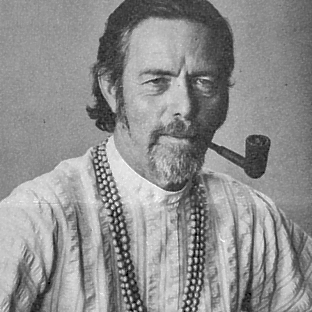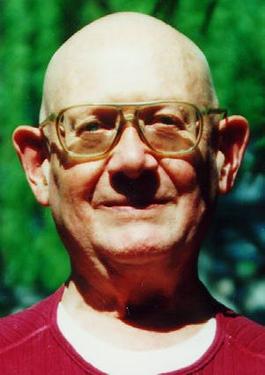Related Research Articles

Gary Snyder is an American poet, essayist, lecturer, and environmental activist. His early poetry has been associated with the Beat Generation and the San Francisco Renaissance and he has been described as the "poet laureate of Deep Ecology". Snyder is a winner of a Pulitzer Prize for Poetry and the American Book Award. His work, in his various roles, reflects an immersion in both Buddhist spirituality and nature. He has translated literature into English from ancient Chinese and modern Japanese. For many years, Snyder was an academic at the University of California, Davis, and for a time served as a member of the California Arts Council.

Shunryu Suzuki was a Sōtō Zen monk and teacher who helped popularize Zen Buddhism in the United States, and is renowned for founding the first Zen Buddhist monastery outside Asia. Suzuki founded San Francisco Zen Center which, along with its affiliate temples, comprises one of the most influential Zen organizations in the United States. A book of his teachings, Zen Mind, Beginner's Mind, is one of the most popular books on Zen and Buddhism in the West.

Alan Wilson Watts was an English writer, speaker, and self-styled "philosophical entertainer", known for interpreting and popularising Buddhist, Taoist, and Hindu philosophy for a Western audience.
Buddhism in the West broadly encompasses the knowledge and practice of Buddhism outside of Asia in the Western world. Occasional intersections between Western civilization and the Buddhist world have been occurring for thousands of years. The first Westerners to become Buddhists were Greeks who settled in Bactria and India during the Hellenistic period. They became influential figures during the reigns of the Indo-Greek kings, whose patronage of Buddhism led to the emergence of Greco-Buddhism and Greco-Buddhist art. There was little contact between the Western and Buddhist cultures during most of the Middle Ages but the early modern rise of global trade and mercantilism, improved navigation technology and the European colonization of Asian Buddhist countries led to increased knowledge of Buddhism among Westerners. This increased contact led to various responses from Buddhists and Westerners throughout the modern era. These include religious proselytism, religious polemics and debates, Buddhist modernism, Western convert Buddhists and the rise of Buddhist studies in Western academia. During the 20th century, there was a growth in Western Buddhism due to various factors such as immigration, globalization, the decline of Christianity and increased interest among Westerners. The various schools of Buddhism are now established in all major Western countries making up a small minority in the United States, Europe, Australia and New Zealand.

Daisetsu Teitaro Suzuki, self-rendered in 1894 as "Daisetz", was a Japanese essayist, philosopher, religious scholar, translator, and writer. He was a scholar and author of books and essays on Buddhism, Zen and Shin that were instrumental in spreading interest in both Zen and Shin to the West. Suzuki was also a prolific translator of Chinese, Korean, Japanese, Vietnamese and Sanskrit literature. Suzuki spent several lengthy stretches teaching or lecturing at Western universities, and devoted many years to a professorship at Ōtani University, a Japanese Buddhist school.
A lineage in Buddhism is a line of transmission of the Buddhist teaching that is "theoretically traced back to the Buddha himself." The acknowledgement of the transmission can be oral, or certified in documents. Several branches of Buddhism, including Chan and Tibetan Buddhism maintain records of their historical teachers. These records serve as a validation for the living exponents of the tradition.

Philip Glenn Whalen was an American poet, Zen Buddhist, and a key figure in the San Francisco Renaissance and close to the Beat generation.

Anagarika Govinda was the founder of the order of the Arya Maitreya Mandala and an expositor of Tibetan Buddhism, Abhidharma, and Buddhist meditation as well as other aspects of Buddhism. He was also a painter and poet.
JikaiDainin Katagiri, was a Sōtō Zen priest and teacher, and the founding abbot of Minnesota Zen Meditation Center in Minneapolis, Minnesota, where he served from 1972 until his death from cancer in 1990. He is also the founder of Hokyoji Zen Practice Community in Eitzen, Minnesota. Before becoming first abbot of the Minnesota Zen Meditation Center, Katagiri had worked at the Zenshuji Soto Zen Mission in Los Angeles and had also been of great service to Shunryu Suzuki at the San Francisco Zen Center, particularly from 1969 until Suzuki's death in 1971. Katagiri was important in helping bring Zen Buddhism from Japan to the United States during its formative years. He is also the credited author of several books compiled from his talks.

The term American Buddhism can be used to describe all Buddhist groups within the United States, including Asian-American Buddhists born into the faith, who comprise the largest percentage of Buddhists in the country.

Japanese Zen refers to the Japanese forms of Zen Buddhism, an originally Chinese Mahāyāna school of Buddhism that strongly emphasizes dhyāna, the meditative training of awareness and equanimity. This practice, according to Zen proponents, gives insight into one's true nature, or the emptiness of inherent existence, which opens the way to a liberated way of living.

Sokei-an Shigetsu Sasaki, born Yeita Sasaki, was a Japanese Rinzai monk who founded the Buddhist Society of America in New York City in 1930. Influential in the growth of Zen Buddhism in the United States, Sokei-an was one of the first Japanese masters to live and teach in America and the foremost purveyor in the U.S. of Direct Transmission. In 1944 he married American Ruth Fuller Everett. He died in May 1945 without leaving behind a Dharma heir. One of his better known students was Alan Watts, who studied under him briefly. Watts was a student of Sokei-an in the late 1930s.
Below is a timeline of important events regarding Zen Buddhism in the United States. Dates with "?" are approximate.
Ruth Fuller Sasaki, born Ruth Fuller, was an American writer and Buddhist teacher. She was important figure in the development of Buddhism in the United States. As Ruth Fuller Everett, she met and studied with Daisetz Teitaro Suzuki in Japan in 1930. In 1938, she became a principal supporter of the Buddhist Society of America, in New York. She married Sokei-an, the Zen priest in residence there, in 1944, but he died within a year. In 1949, she went to Kyoto to find another roshi to live and teach in New York, to complete translations of key Zen texts, and to pursue her own Zen training, receiving sanzen from Gotō Zuigan.
Buddhist modernism are new movements based on modern era reinterpretations of Buddhism. David McMahan states that modernism in Buddhism is similar to those found in other religions. The sources of influences have variously been an engagement of Buddhist communities and teachers with the new cultures and methodologies such as "Western monotheism; rationalism and scientific naturalism; and Romantic expressivism". The influence of monotheism has been the internalization of Buddhist gods to make it acceptable in modern Western society, while scientific naturalism and romanticism has influenced the emphasis on current life, empirical defense, reason, psychological and health benefits.
Zen was introduced in the United States at the end of the 19th century by Japanese teachers who went to America to serve groups of Japanese immigrants and become acquainted with the American culture. After World War II, interest from non-Asian Americans grew rapidly. This resulted in the commencement of an indigenous American Zen tradition which also influences the larger western (Zen) world.
Zen lineage charts depict the transmission of the dharma from one generation to another. They developed during the Tang dynasty, incorporating elements from Indian Buddhism and East Asian Mahayana Buddhism, but were first published at the end of the Tang.
Claude Dalenberg was a Zen priest ordained by Shunryū Suzuki and a dharma successor of Tenshin Reb Anderson.

Li Gotami Govinda was an Indian painter, photographer, writer and composer. She was also skilled in ballet and stagecraft. She gained fame with her conversion to Mahayana Buddhism and travels in Tibet.
References
- ↑ Bogdanova-Kummer, Eugenia (2020). Bokujinkai: Japanese Calligraphy and the Postwar Avant-Garde. Brill. p. 101. ISBN 9789004437067.
- ↑ "Zen Boom". pluralism.org. Harvard University.
- ↑ Levine, Gregory (2017). Long Strange Journey On Modern Zen, Zen Art, and Other Predicaments. University of Hawaii Press. pp. 102–105. ISBN 9780824858087.
- ↑ Micozzi, Marc. Fundamentals of Complementary and Alternative Medicine - E-Book. Elsevier Health Sciences. pp. 86–88. ISBN 9781437727050.
- ↑ Seager, Richard (2012). Buddhism in America. Columbia University Press. pp. 46–50. ISBN 9780231159722.
- ↑ Hughes Seager, 1999, p. 91.
- ↑ Hughes Seager, 1999, p. 98.
- ↑ Coleman, 2001, p. 66.
- ↑ Hughes Seager, 1999, p. 113-114.
- ↑ Hughes Seager, 1999, p. 114.